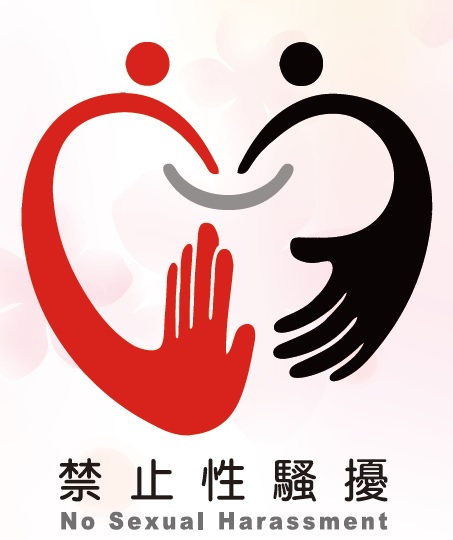Article 1
Aeneas Technology Co., Ltd. (hereinafter referred to as "the Company") is committed to providing a workplace and service environment free from sexual harassment for employees, dispatched workers, and job applicants. In accordance with Article 13, Paragraph 1 of the Act of Gender Equality in Employment and the "Guidelines on Preventing Sexual Harassment in the Workplace" issued by the Ministry of Labor, the Company has established these regulations to implement appropriate prevention, correction, disciplinary, and handling measures that protect the rights, interests, and privacy of the parties involved.
Article 2
Unless otherwise specified by law, the Company shall follow these regulations in all measures and complaint procedures related to the prevention of sexual harassment.
Article 3
Supervisors at all levels of the Company shall not commit any of the following acts toward their subordinates, between employees, or toward job applicants:
- Creating a hostile, intimidating, or offensive work environment through sexually suggestive, discriminatory language or behavior that undermines personal dignity, physical autonomy, or work performance.
- Using explicit or implicit sexual advances, innuendos, or gender-discriminatory remarks or behavior as conditions for the formation, continuation, modification, assignment, deployment, compensation, performance evaluation, promotion, demotion, or disciplinary action in labor contracts.
Article 4
In addition to the provisions in Article 12, Paragraphs 1–4 of the Act of Gender Equality in Employment, the following behaviors may also be considered during sexual harassment investigations:
- Inappropriate staring, touching, hugging, kissing, or sniffing of any part of another person's body, or forcibly making others do the same to one’s own body.
- Sending, displaying, or broadcasting sexually suggestive or discriminatory texts, images, audio, videos, or other items.
- Repeated or continuous unwelcome following or pursuit.
Article 5
The Company has established dedicated hotlines, fax numbers, mailboxes, email addresses, or other designated complaint channels for reporting sexual harassment, and displays this information prominently in the workplace. A designated individual or unit is responsible for complaint handling, investigation, and resolution.
Complaint Hotline: +886-2-87974259 ext. 550
Complaint Fax: +886-2-87974260
Complaint EmailHR@aeneas.com.tw
 Sexual harassment complaint
Sexual harassment complaint
Article 6The Company shall provide sexual harassment prevention training for the following individuals:
- All employees shall receive training on workplace sexual harassment prevention.
- Supervisors and personnel involved in handling, investigating, or deciding on complaints must undergo annual training.
Priority training shall be given to the personnel and units mentioned in the preceding article, as well as directors, supervisors, managers, and those in supervisory positions.
Article 7Upon learning of a sexual harassment incident, the Company will take the following immediate and effective corrective and remedial measures:
A. When informed through a complaint by the victim:
- With the complainant’s consent, implement appropriate separation measures to prevent recurrence. The complainant’s salary or working conditions shall not be adversely affected.
- Provide or refer the complainant to counseling, medical, psychological, social welfare resources, or other necessary services.
- Initiate an investigation, including interviews and appropriate procedures.
- If the respondent holds a position of authority and the case is serious, suspend or adjust their position during the investigation. If found not guilty, the salary during the suspension shall be reimbursed.
- If the allegation is substantiated, appropriate disciplinary actions will be taken depending on the severity. For serious cases, the Company may terminate the labor contract without notice as per the Act.
- If malicious fabrication is proven, the complainant will also face appropriate consequences.
B. If the case is discovered through means other than a complaint:
- Interview relevant personnel to clarify facts.
- Inform the victim of their rights and assist with filing a complaint, if desired.
- Adjust work assignments or location as needed.
- Offer or refer support services per the victim’s wishes.
Even if the victim chooses not to file a complaint, the Company will still take corrective and remedial actions as outlined above.
Article 8If the respondent is not a Company employee or the complainant is a dispatched worker or job applicant, the Company shall still follow these regulations and take necessary corrective and remedial actions.
If the victim and perpetrator are from different organizations with a cooperative relationship, the Company shall:
1. Notify the other employer via written, verbal, or electronic communication for joint resolution.
2. Protect the privacy and other personal rights of those involved.
Article 9If employees work at sites not under the Company’s control, the Company shall identify sexual harassment risks, provide necessary protections, and inform employees in advance.
Upon learning of a harassment case applicable under the Sexual Harassment Prevention Act or Stalking Prevention Act, the Company will assess risk and provide timely assistance and preventive measures.
Article 10
All sexual harassment complaints and decisions shall be handled confidentially to protect the privacy and personal rights of the parties involved, and to prevent retaliation.
A Sexual Harassment Complaint Committee of three members will be established. The HR manager shall be a standing member, with the remaining members appointed by the General Manager from current employees. At least one member shall be a gender-awareness professional, and women must make up no less than half of the committee.
The General Manager may appoint a convener who shall preside over meetings. If the convener is unavailable, another member may act as a substitute. If the victim is a dispatched worker and the respondent a Company employee, the Company will handle the complaint and jointly investigate with the dispatching agency.
Article 11If the respondent is the highest-ranking officer of the Company, employees, dispatched workers, or applicants may also file complaints directly with the local labor authority in accordance with Article 32-1, Paragraph 1, Subparagraph 1 of the Act.
Article 12
Complaints may be submitted orally, via email, or in writing. Oral or email submissions must be documented and confirmed with the complainant for accuracy.
The complaint record shall be signed or stamped by the complainant and include:
1.The name, address, and contact information of the complainant and, if applicable, their legal or appointed representative (with authorization letter).
2.The facts of the complaint and related evidence.
The Company will notify the local labor authority upon receipt of a complaint, per Ministry of Labor regulations.
Article 13The complainant may withdraw their complaint in writing before the Company issues a resolution. Once withdrawn, the same issue may not be re-complained unless new facts or evidence emerge.
Article 14
Investigations will be conducted objectively, fairly, and professionally, with respect for privacy and personal rights.
The investigation report shall include:
1.The nature and description of the case.
2.Records of interviews, including dates and participants.
3.Findings and reasons.
4.Recommendations for handling.
Article 15Personnel involved in the case must protect the privacy and rights of the parties and any interviewees. Identities must be kept confidential unless disclosure is necessary for investigation or public safety.
Anyone violating this confidentiality will be removed from the case and may face disciplinary action and dismissal.
Article 16If any member involved in the complaint is a party or related by marriage or blood (within four degrees), they must recuse themselves.
If they fail to do so, or if there’s concern of bias, either party may request their recusal with written justification.
Pending a decision on the request, the concerned member must suspend involvement, unless urgent action is needed.
If no request is made but bias is evident, the Company may order their removal.
Article 17A majority of members must be present for meetings. Decisions require majority agreement; ties are resolved by the chairperson.
The committee may invite parties and relevant individuals to meetings to present and respond, and may seek expert assistance.
Written decisions with reasons shall be issued to both parties and may include recommendations for disciplinary actions.
Article 18The Company shall conclude investigations within two months from receiving the complaint, with a one-month extension if necessary (and notify the parties).
If the complainant believes the Company failed to act or disagrees with the outcome, they may appeal to the local labor authority per Article 32-1 of the Act.
If the Company fails to take immediate remedial measures, complaints may be filed under Article 34, Paragraph 1 of the Act.
Article 19If judicial proceedings are underway and the complainant agrees, the Company may decide to suspend the internal investigation and resolution. This period is not subject to the two-month deadline in the preceding article.
Article 20If sexual harassment is confirmed, the Company shall impose appropriate disciplinary measures based on the severity and notify the local authority as required. If criminal charges apply, the Company will assist in prosecution.
If the Company is held jointly liable for damages under Article 27 of the Act, it may seek compensation from the harasser after reimbursing the victim.
Article 21The Company shall follow up, assess, and supervise the implementation of disciplinary actions to ensure effectiveness and prevent recurrence or retaliation.
Article 22These regulations shall take effect upon approval and announcement by the General Manager, and the same applies to any amendments.
Announcement date: May 9, 2025



